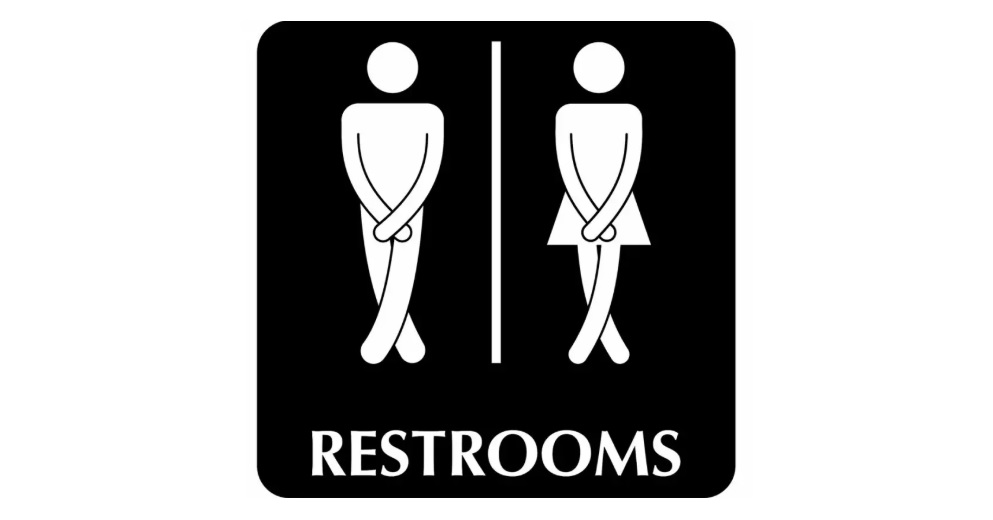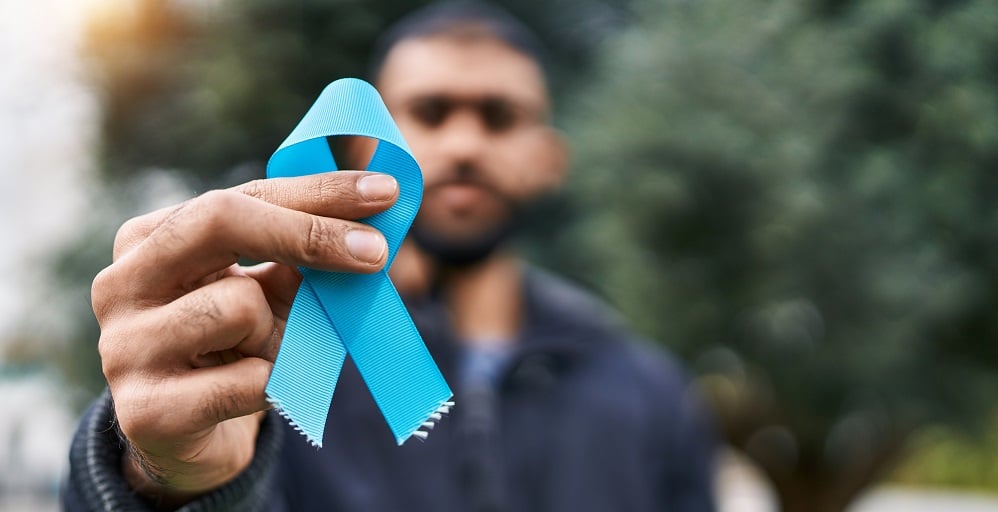Overactive Bladder (OAB)
Overactive Bladder (OAB)

OAB Causes and Risk Factors
- Diabetes (high blood-sugar levels).4
- A urinary tract infection (UTI) or other bladder disease.4
- Pressure on the bladder caused by an ovarian cyst (a fluid-filled sac inside the ovary).6
- Pressure on the bladder caused by an enlarged or swollen uterus.4
- Extra body weight, which can put pressure on the bladder.3
- An ulcer or growth in the bladder.4
- Neurological (nervous system) disease.4
- Pelvic organ prolapse, where the loss of muscle support can lead to the uterus or vagina “slipping”.4
- Low levels of oestrogen hormones after menopause.7
Pregnancy, post childbirth, older age, and high body mass index (BMI) are all strongly associated with having an OAB.9,10
Symptoms of OAB
Did You Know? Urinary incontinence affects one in three South African women.2
Diagnosing OAB
- The amount of fluid they drink.
- The types of fluid they drink.
- How often they need to urinate.
- The amount of urine they pass.
- Any leakage that takes place.
- How often they experience an urgent need to urinate.
Physical examination: Over and above a general physical examination, the HCP may examine the pelvic area, vagina and rectum.11 Urinalysis: A urine sample is collected and tested with a dipstick to check for signs of infection.12 This can be done by a primary HCP (doctor or nurse). Ultrasound: This non-invasive imaging test to scan the bladder using sound waves, can provide a detailed look at what is going on inside the abdomen and bladder.13,14 Ultrasound scans can detect bladder stones, tumours and issues affecting the bladder wall.14 Computed tomography (CT) scan: Another type of non-invasive imaging test, which combines X-rays with computer technology to create three-dimensional images of the bladder.14 CT scans can detect obstructions, infections, cysts, tumours and injuries.14 Cystoscopy: A bladder examination via the urethra, usually done by a urologist using an instrument called a cystoscope.15 Urodynamic testing: A series of tests done by a urologist or trained technician to measure how much urine remains in the bladder after voiding, the urine flow rate/speed and levels of pressure on the bladder as it fills up.16 It can be done in the urologist’s office or at a hospital.16
- Urine remaining in the bladder: The amount of leftover urine (known as postvoid residual urine) can be scanned using ultrasound and drained for measurement using a thin tube called a catheter.16
- Urine flow rate: Urinating into a device called a uroflowmeter measures how much urine is in the bladder and how fast it comes out.16
- Bladder pressure: This is done using a cystometry test, where the bladder is emptied using a catheter and then slowly filled with fluid using another catheter.16 A sensor in the rectum or vagina is used to measure the pressure on the bladder.16 This measures how much liquid the bladder can hold, how much pressure builds as it fills up, and how full it is when the need to urinate starts.16
Impact of OAB
Treatment of OAB
- Medications called anticholinergics are used to treat urinary urges and an overactive bladder muscle.18
- For menopausal and postmenopausal women, oestrogen therapy with vaginal gels or creams can help to improve the symptoms of OAB.19
- Special exercises, like pelvic floor muscle training (PFMT), can reduce the symptoms of OAB and improve quality of life for patients.20
- Bladder training, sometimes with the guidance of a physiotherapist, can help the bladder adjust to holding larger volumes of urine for a longer time.4 The trigger to urinate can be suppressed by tightening the pelvic floor muscles.4
In serious cases of OAB, surgery might be needed.4 Types of surgeries include:
- Botulinum toxin (Botox) injection: The bladder wall is injected to relax the muscle.4,21
- Percutaneous tibial nerve stimulation (PTNS): An electrode or implantable device is inserted behind the ankle to stimulate the nerve there The tibial nerve and bladder nerves share a common pathway in the sacral plexus at the base of the spine. Stimulation of the tibial nerve sends messages via the bladder nerves to make the bladder relax.4,22
- Sacral neuromodulation: A special transmitter is used to send electrical impulses to the sacral working on the nerve pathways to help restore proper bladder function.23
- Augmentation cystoplasty: A piece of the bowel is removed and added to the bladder to make it larger and increase its ability to hold urine.24
Lifestyle Changes
- Drink enough fluid, to prevent bladder irritation from concentrated (strong) urine 4
- Avoid excessive drinking, to reduce bladder fullness and the urge to urinate.4
- Avoid fizzy and acidic drinks, caffeine and alcohol, to reduce bladder irritation.4
- Quit smoking.4
- Maintain a healthy weight.10,11
Usually, a combination of therapies works to improve treatment effectiveness and patient quality of life.25 Psychological support, like counselling, is also important for patients dealing with the struggles of OAB.25 *Smooth muscle fibres that form the wall of the bladder.8
Medical References
- Eapen RS, Radomski SB. Review of the epidemiology of overactive bladder. Res Rep Urol. 2016;8:71-76. doi:10.2147/RRU.S102441.
- Janse van Vuuren AC, van Rensburg JA, Hanekom S. Practitioner’s knowledge, attitudes, beliefs and practices towards urinary incontinence. S Afr J Physiother. 2023;79(1):1860. doi:10.4102/sajp.v79i1.1860.
- Yang CF, Huang CY, Wang SY, et al. Prevalence of and associated factors for overactive bladder subtypes in middle-aged women: A cross-sectional study. Medicina (Kaunas). 2022;58(3):383. doi:10.3390/medicina58030383.
- Overactive bladder. University Hospitals Sussex NHS Foundation Trust. December 20, 2022. Accessed August 5, 2024. https://www.uhsussex.nhs.uk/resources/overactive-bladder/.
- Sam P, Nassereddin A, LaGrange CA. Anatomy, abdomen and pelvis: Bladder detrusor muscle. In: StatPearls. StatPearls Publishing; 2024. Accessed August 5, 2024. http://www.ncbi.nlm.nih.gov/books/NBK482181/.
- Mobeen S, Apostol R. Ovarian cyst. In: StatPearls. StatPearls Publishing; 2024. Accessed August 5, 2024. http://www.ncbi.nlm.nih.gov/books/NBK560541/.
- Robinson D, Toozs-Hobson P, Cardozo L. The effect of hormones on the lower urinary tract. Menopause Int. 2013;19(4):155-162. doi:10.1177/1754045313511398.
- Van Brummen HJ, Bruinse HW, Van De Pol G, et al. Bothersome lower urinary tract symptoms 1 year after first delivery: Prevalence and the effect of childbirth. BJU International. 2006;98(1):89-95. doi:10.1111/j.1464-410X.2006.06211.x.
- Zhu J, Hu X, Dong X, et al. Associations between risk factors and overactive bladder: A meta-analysis. Female Pelvic Med Reconstr Surg. 2019;25(3):238-246. doi:10.1097/SPV.0000000000000531.
- Hagovska M, Švihra J, Buková A, et al. The relationship between overweight and overactive bladder symptoms. Obes Facts. 2020;13(3):297-306. doi:10.1159/000506486.
- Urinary incontinence – Diagnosis. nhs.uk. Last reviewed June 15, 2023. Accessed August 5, 2024. https://www.nhs.uk/conditions/urinary-incontinence/diagnosis/.
- Queremel Milani DA, Jialal I. Urinalysis. In: StatPearls. StatPearls Publishing; 2024. Accessed August 5, 2024. http://www.ncbi.nlm.nih.gov/books/NBK557685/.
- Moslemi MK, Mahfoozi B. Urologist-operated ultrasound and its use in urological outpatient clinics. Patient Prefer Adherence. 2011;5:85-88. doi:10.2147/PPA.S17132.
- Urinary tract imaging. National Institute of Diabetes and Digestive and Kidney Diseases. Accessed August 5, 2024. https://www.niddk.nih.gov/health-information/diagnostic-tests/urinary-tract-imaging.
- Engelsgjerd JS, Deibert CM. Cystoscopy. In: StatPearls. StatPearls Publishing; 2024. Accessed August 5, 2024. http://www.ncbi.nlm.nih.gov/books/NBK493180/.
- Urodynamic testing. National Institute of Diabetes and Digestive and Kidney Diseases. Accessed August 5, 2024. https://www.niddk.nih.gov/health-information/diagnostic-tests/urodynamic-testing.
- Mehr AA, Kreder KJ, Lutgendorf SK, et al. Daily symptom associations for urinary urgency and anxiety, depression and stress in women with overactive bladder. Int Urogynecol J. 2022;33(4):841-850. doi:10.1007/s00192-021-05033-0.
- Ghossein N, Kang M, Lakhkar AD. Anticholinergic medications. In: StatPearls. StatPearls Publishing; 2024. Accessed August 5, 2024. http://www.ncbi.nlm.nih.gov/books/NBK555893/.
- Baruch Y, Torella M, De Bastiani S, et al. Pre- versus post-menopausal onset of overactive bladder and the response to vaginal estrogen therapy: A prospective study. Medicina (Kaunas). 2023;59(2):245. doi:10.3390/medicina59020245.
- Fitz F, Sartori M, Girão MJ, et al. Pelvic floor muscle training for overactive bladder symptoms – A prospective study. Rev Assoc Med Bras. 2017;63:1032-1038. doi:10.1590/1806-9282.63.12.1032.
- Hsieh PF, Chiu HC, Chen KC, et al. Botulinum toxin A for the treatment of overactive bladder. Toxins (Basel). 2016;8(3):59. doi:10.3390/toxins8030059.
- Bhide AA, Tailor V, Fernando R, et al. Posterior tibial nerve stimulation for overactive bladder—Techniques and efficacy. Int Urogynecol J. 2020;31(5):865-870. doi:10.1007/s00192-019-04186-3.
- Feloney MP, Stauss K, Leslie SW. Sacral neuromodulation. In: StatPearls. StatPearls Publishing; 2024. Accessed August 5, 2024. http://www.ncbi.nlm.nih.gov/books/NBK567751/.
- Veeratterapillay R, Thorpe AC, Harding C. Augmentation cystoplasty: Contemporary indications, techniques and complications. Indian J Urol. 2013;29(4):322-327. doi:10.4103/0970-1591.120114.
- Jin Z, Zhang Q, Yu Y, et al. Progress in overactive bladder: Novel avenues from psychology to clinical opinions. PeerJ. 2023;11:e16112. doi:10.7717/peerj.16112.







